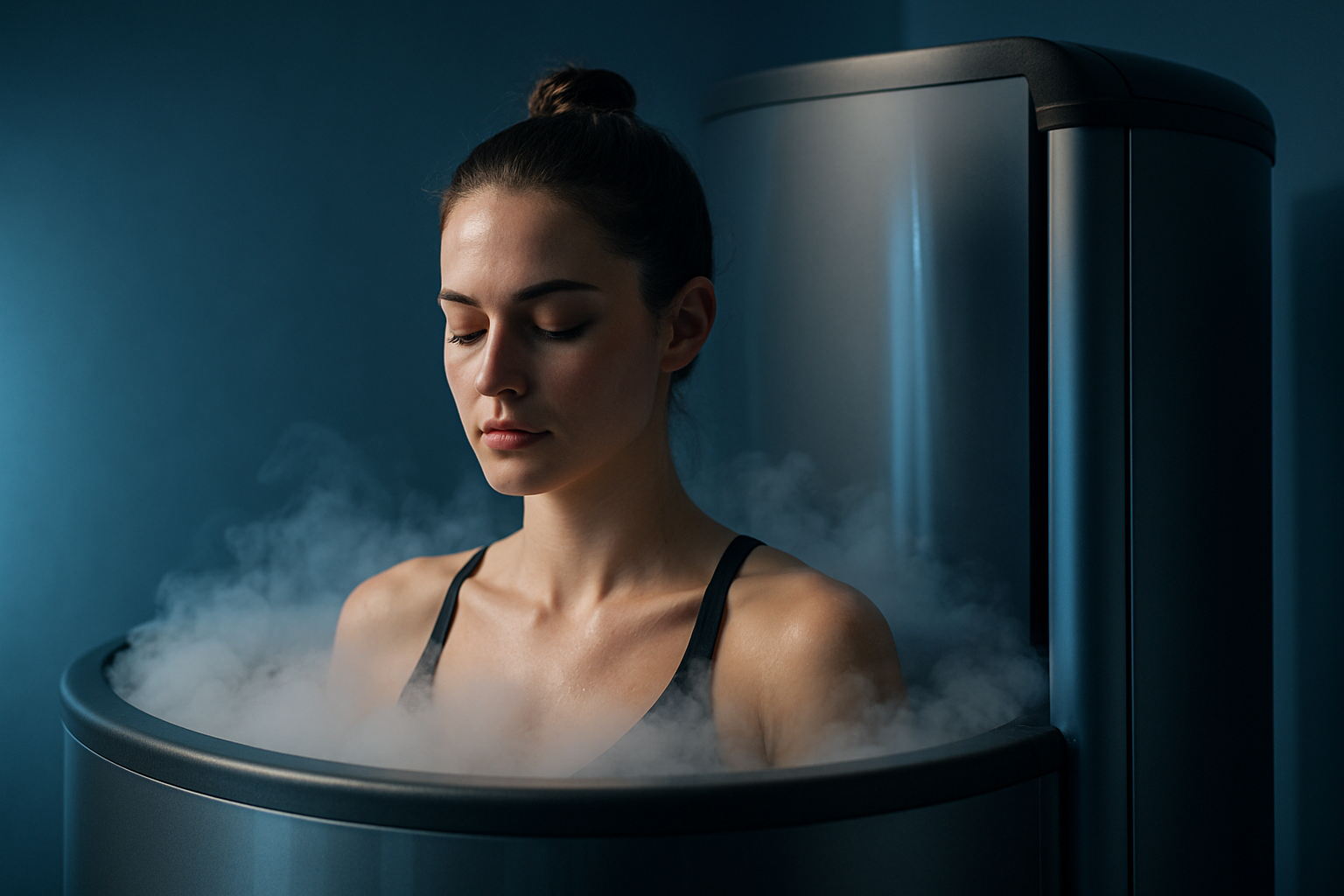Cryotherapy: The Cold Revolution in Wellness
In a world where health-conscious individuals are constantly seeking innovative ways to enhance their well-being, cryotherapy has emerged as a cutting-edge treatment that's sending shockwaves through the beauty and fitness industry. This extreme cold therapy, once reserved for elite athletes, is now making its way into mainstream wellness routines. Proponents claim it can boost recovery, reduce inflammation, and even slow the aging process. As spas and wellness centers across the globe install cryotherapy chambers, it's clear that this icy treatment is more than just a passing fad. But what exactly is cryotherapy, and does it live up to the hype? Let's dive into the frosty world of this intriguing wellness trend and explore its potential benefits and risks.

The theory behind cryotherapy is rooted in the body’s natural response to cold. When exposed to extreme cold, blood vessels in the skin’s surface and underlying tissues constrict, reducing blood flow to the extremities. This triggers the body’s survival mechanisms, redirecting blood to vital organs and initiating a cascade of physiological responses.
Historical Context and Evolution
While the use of cold therapy dates back to ancient civilizations, modern cryotherapy as we know it today has a more recent history. The concept was pioneered in Japan in the 1970s by Dr. Toshima Yamauchi, who used cold treatments to help patients with rheumatoid arthritis. His work laid the foundation for the development of whole-body cryotherapy chambers.
Initially adopted by elite athletes for recovery and performance enhancement, cryotherapy has gradually found its way into mainstream wellness and beauty treatments. The first cryotherapy centers outside of Japan opened in Europe in the 1980s, and by the early 2000s, the trend had spread to the United States and beyond.
Current Industry Trends and Market Growth
The global cryotherapy market has experienced exponential growth in recent years. According to a report by Grand View Research, the market size was valued at $3.2 billion in 2020 and is expected to expand at a compound annual growth rate (CAGR) of 9.7% from 2021 to 2028. This surge is driven by increasing awareness of the potential benefits of cryotherapy, growing demand for non-invasive pain management solutions, and the rising popularity of wellness tourism.
The beauty industry, in particular, has embraced cryotherapy with open arms. Cryofacials, which involve applying cold nitrogen vapor to the face, have become a sought-after treatment in high-end spas and dermatology clinics. These treatments claim to tighten pores, boost collagen production, and give the skin a youthful glow.
Benefits and Applications in Fitness and Recovery
One of the primary applications of cryotherapy in fitness is post-exercise recovery. Athletes and fitness enthusiasts report reduced muscle soreness and faster recovery times after intense workouts. The extreme cold is thought to reduce inflammation and oxidative stress, potentially accelerating the body’s natural healing processes.
Research published in the Journal of Clinical Medicine in 2020 suggests that whole-body cryotherapy may have positive effects on muscle recovery and performance. The study found that participants who underwent cryotherapy sessions after high-intensity exercise experienced less muscle damage and fatigue compared to those who did not receive the treatment.
Beyond recovery, some proponents claim that regular cryotherapy sessions can boost metabolism and aid in weight loss. While more research is needed to substantiate these claims, the intense cold exposure does cause the body to work harder to maintain its core temperature, potentially burning additional calories in the process.
Beauty Applications and Skin Health
In the realm of beauty and skincare, cryotherapy has gained traction for its purported anti-aging effects. The extreme cold is said to stimulate collagen production, improve skin elasticity, and reduce the appearance of fine lines and wrinkles. Some dermatologists have incorporated localized cryotherapy treatments into their practices, using controlled cold application to target specific areas of concern.
A study published in the Journal of Cosmetic Dermatology in 2018 examined the effects of cryotherapy on skin aging. The researchers found that participants who underwent a series of whole-body cryotherapy sessions showed improvements in skin firmness and a reduction in the appearance of cellulite.
Potential Risks and Controversies
While cryotherapy has garnered significant attention for its potential benefits, it’s not without its critics and concerns. The U.S. Food and Drug Administration (FDA) has not cleared or approved whole-body cryotherapy devices for medical treatment of any specific medical conditions. They warn that these devices lack evidence of effectiveness and may pose health risks.
Potential risks associated with cryotherapy include:
-
Frostbite and skin burns from improper use or exposure
-
Breathing difficulties, especially for individuals with respiratory conditions
-
Anxiety and claustrophobia during treatment
-
Temporary dizziness or lightheadedness
It’s crucial for individuals considering cryotherapy to consult with a healthcare professional and ensure they receive treatment from qualified providers using properly maintained equipment.
The Future of Cryotherapy in Wellness
As research into cryotherapy continues, we can expect to see more refined applications and potentially new discoveries about its effects on the body. The integration of cryotherapy with other wellness modalities, such as meditation or light therapy, may offer new avenues for holistic health approaches.
Technological advancements are also likely to play a role in the evolution of cryotherapy. We may see the development of more precise, personalized cryotherapy treatments that can target specific areas of the body or address individual health concerns more effectively.
In conclusion, cryotherapy represents a fascinating intersection of ancient cold therapy principles and modern technology. While its full potential and long-term effects are still being explored, it has undoubtedly carved out a significant niche in the beauty and fitness industry. As with any emerging wellness trend, it’s essential to approach cryotherapy with a balanced perspective, weighing the potential benefits against the risks and always prioritizing safety and evidence-based practices. Whether cryotherapy will stand the test of time as a revolutionary wellness treatment or fade as a fleeting trend remains to be seen, but for now, it continues to captivate those seeking innovative approaches to health, beauty, and fitness.





